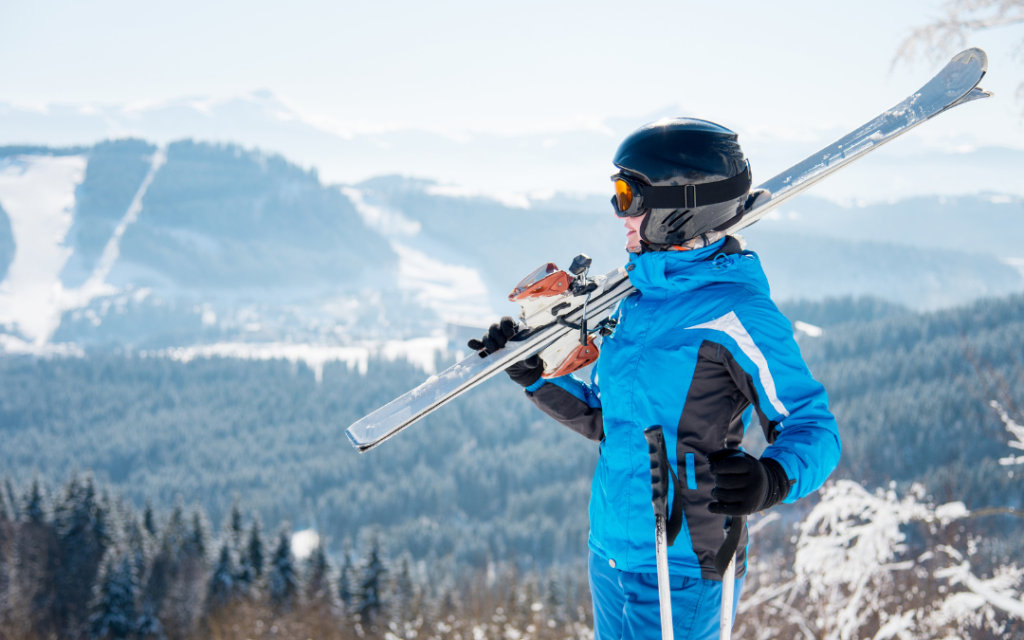
Snow sports like skiing and snowboarding can be thrilling, even here in New Zealand. Whether you’re planning a trip down to Queenstown this season or making the most of the (potential) last season at our North Island ski fields, it’s important to spend at least a little time preparing your body to minimise the risk of injuries and enhance your performance on the slopes – especially if you’re planning to spend a week at the mountain.
Cardiovascular Work
Snow sports demand stamina and endurance, making cardiovascular fitness vital. Despite relying on gravity for downhill momentum, skiers often encounter flat areas that require skiing or pushing along. Snowboarders may need to remove their boards and walk on flat terrain, which can quickly become tiring due to the added weight of gear. Building cardiovascular fitness through regular aerobic exercise, such as running or cycling, can enhance endurance and help you navigate these challenges with ease. Try to add a few extra sessions weekly in the month leading up to your trip (or longer if you can!).
Strengthening Work
Both skiers and snowboarders rely on specific muscle groups while on the mountain. Skiers require strong core muscles to stabilise their spine, pelvis, hamstrings and quads for knee bending and leg extension, lower leg muscles for foot control and ski edging, and glutes for overall stability. Snowboarders, on the other hand, heavily engage the quads, hamstrings, and glutes while maintaining knee flexion, with the calves playing a crucial role in maintaining balance and controlling ankle movement. Additionally, upper body strength is essential for skiers who use ski poles and for snowboarders who need to manoeuvre and re-strap their boards. This means getting in a few extra weekly gym sessions in the month leading up to your ski trip to help your body prepare best.
Flexibility Work
Snow sports really put your joints to the test, making flexibility crucial for preventing injuries and helping you have a safe ski holiday for the whole family. We recommend incorporating a thorough stretching program before your ski holiday to enhance your joint strength and mobility. Prioritise consistency over session length, stretching frequently for shorter durations. Ensure you stretch through the full range of motion, feeling the stretch at the end points. On ski days, warm up your body and stretch your muscles properly to reduce the risk of injury, as cold muscles are more susceptible to strains.
Provide Extra Support To Vulnerable Areas
If you have any pre-existing injuries, niggles, or weak areas, it’s essential to provide them with additional support to prevent exacerbation on the slopes. Consider using strapping, compression gear, or knee guards if necessary. Seeking advice from a podiatrist can help you determine the best ways to protect vulnerable areas and prevent potential injuries. They can guide you on proper strapping techniques and injury prevention measures tailored to your specific needs.
Listen to Your Body
Listening to your body is crucial both before and during your snow sports adventure. Pain and discomfort should never be ignored, as they are often signs of an underlying issue. If you experience pain or niggles before your trip, it’s important to address them to avoid further complications. Likewise, if something feels off during your time on the slopes, pay attention to your body’s signals and take appropriate action. Ignoring warning signs can lead to more severe injuries and prolonged pain.
Frequently Asked Questions
Can foot pain affect my performance while skiing or snowboarding?
Yes, foot pain can significantly impact your performance and overall enjoyment of snow sports. Proper ski footwear, foot support, and addressing any underlying foot conditions are crucial for optimal performance.
Should I wear custom orthotics while skiing or snowboarding?
If you use custom orthotics in your daily life, you may consider using orthotics that are fitted especially for your ski or snowboard boots – but this may only apply in some cases and you should consult your podiatrist. While custom orthotics can provide additional support, improve alignment, and help alleviate foot pain, standard orthotics don’t tend to fit into already tight-fitting ski and snowboard boots, and the skiers we work with usually have custom ski orthotics made if they’re heading to the slopes regularly.
What type of socks should I wear for snow sports?
Choose moisture-wicking socks made from synthetic or wool materials to keep your feet dry and warm. Avoid cotton socks as they retain moisture and can lead to discomfort and blisters.
How can I prevent blisters while skiing or snowboarding?
To prevent blisters, wear well-fitted boots or shoes that provide ample room for your toes. Consider using blister pads or applying moleskin to areas prone to friction. Ensure your socks are clean and dry before putting them on. We also have a range of silicone toe props and other products available from the clinic for you to try.
How do I choose the right ski or snowboard boots?
Unfortunately, the only answer to this is to consult with a professional boot fitter who can assess your foot shape, size, and specific needs to help you find the right boots, as individual needs vary so greatly from person to person.








